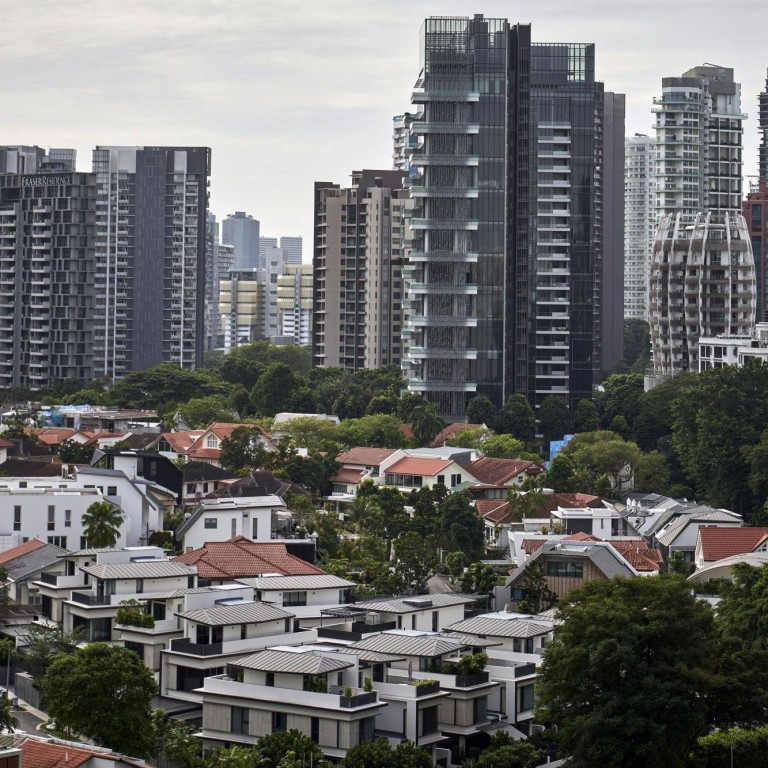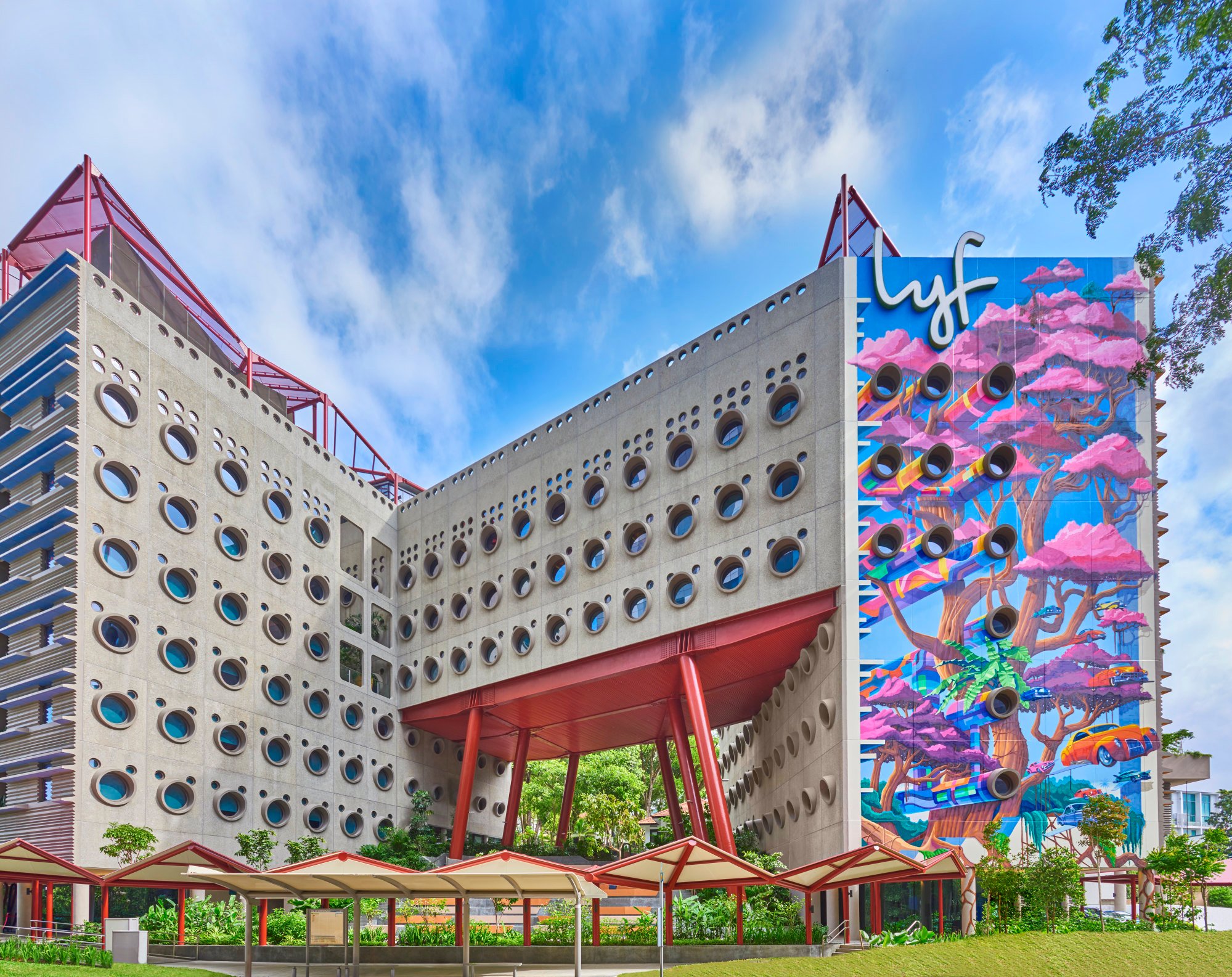
Expats in Singapore opt for co-living as ‘red hot’ rents rise by up to 40 per cent
- A ‘massive reduction’ in available properties partly fuelled by an influx of foreign buyers and expats has lit a fire under Singapore’s rental market
- Co-living is more flexible and cost-effective than renting, insiders and tenants say – though for some the savings don’t outweigh the downsides
She most recently shared a three-bedroom apartment with her husband and a flatmate until the lease expired in September last year, sending her on a frantic house-hunt.
“My husband and I decided to look for a one-bedroom condominium [unit] but it was not easy to find an affordable place at the location we wanted,” the 33-year-old said.

Convenience and location weren’t the only factors, however. Staying at Coliwoo, the co-living space, sets Nguyen and her husband back S$1,800 (US$1,300) per month. A one-bedroom unfurnished flat in Kovan, a neighbourhood on the city’s fringes, costs more than S$2,000 in monthly rent.
“We were not sure whether co-living was really for us so we signed a six-month lease at first,” said Nguyen, who has since extended her contract by more than a year. “It’s quite a comfortable lifestyle. My husband doesn’t want to go back to renting homes from landlords any more.”
Singapore lures new wave of Chinese investors eyeing good schools, stability
More expatriates like Nguyen are now ditching traditional long-term residential leases as rental prices in Singapore skyrocket. They are instead gravitating towards co-living businesses, which have reported a strong pickup in demand, partly also driven by the return of tourists and corporate travellers since the city state relaxed its border measures earlier this year.
Figment, a luxury co-living operator that leases boutique shophouse apartments, has expanded from the four buildings it had at the company’s beginnings some three years ago to 30 shophouses, with 160 rooms.
Its founder Fang Low said only 60 per cent of its apartments were filled at the height of the Covid-19 pandemic, when Singapore’s borders were closed. “Right now, we are so full,” he said. “We have a wait-list of a lot of people. The market has really turned.”
Another popular co-living space, Hmlet, has seen a return of corporate travellers to Singapore for trade conferences and other business, as well as leisure tourists and students returning for face-to-face on-campus education.

“The Singapore government’s stance of reopening for business and leisure has been critical in attracting new visitors to Singapore, compared to some of our neighbours who are still facing restrictions,” said Hmlet CEO Giselle Makarachvili.
Makarachvili said Hmlet’s occupancy rates are now “healthy”, having recovered to around pre-pandemic levels.
At Coliwoo – which owns nine co-living properties across Singapore – the occupancy rate has surpassed 97 per cent. Enquiries from foreigners, who make up 70 per cent of residents, have increased threefold since the city states relaxed its border rules.
Living the dream? Survey shows Singapore, Hong Kong expats ‘burned out, lonely’
Chong Ching Yeng, senior regional marketing manager, said Coliwoo also attracts families waiting for house renovations, younger millennials looking for their own space and other Singapore residents.
But their main clients are expatriates who either recently arrived in, returned to or are departing from Singapore and need short-term accommodation, as well as others who prefer a co-living environment. Leases for this group are typically around seven months, she said.
Co-living offers expats value, flexibility
Chong said co-living options could be more cost-effective and convenient for expatriates as bills and services are often included.
Nguyen, the Vietnamese designer, said her monthly rent and fees covered the cost of internet access, utilities, housekeeping and shared gym and lounge facilities – a deciding factor when weighing co-living against a rental property, which might also need furnishing.
“Aside from financial considerations, we have noticed that expats are also increasingly keen on finding out more about the innovative concept of co-living in Singapore,” said Chong, pointing to the networking opportunities provided by communal areas and community events.
“This can be particularly useful for [those] who are new to Singapore and looking to make brand-new connections.”
I have lived by myself all my life and my little experiment with sharing [co-living spaces] was a failure
At lyf, the co-living arm of real estate group The Ascott Limited, in-house activities are provided for residents spanning digital nomads, tech entrepreneurs and creatives - or what lyf calls “next-generation guests”.
“The pandemic has spurred a new way to live and work. There is an increasing trend of digital nomads and self-starters preferring to work remotely, demanding novel experiences and opportunities to connect,” said Norman Cross, head of lyf brand.
Lyf operates three properties in Singapore, the newest of which launched in March. It has also seen a surge in demand, with foreign guest numbers up 35 per cent compared to the same period last year.
Flexibility is another draw. Unlike traditional rental housing with contracts specifying a minimum commitment of six months, a year or sometimes more, some co-living spaces put no such restrictions on the length of stay.
“I wanted to try new things and didn’t have time for house hunting,” he said. “But I have lived by myself all my life and my little experiment with sharing [co-living spaces] was a failure.”
Park said his room was spacious enough and came with its own balcony and en suite bathroom, but he did not enjoy sharing common spaces such as the living room and kitchen with others.
As Chinese buyer drops US$61m on condos, what’s fuelling Singapore home prices?
For about S$800 extra per month, he later rented a three-bedroom condominium unit. “For people who care about privacy, it’s worth it,” said the 29-year-old who works in the IT industry.
Ella, a property agent specialising in expats at Knight Frank, suggested that foreigners who opted for co-living arrangements were more likely to be students, young graduates or those on a tight budget. “Culturally, expats want their own homes and aren’t used to sharing beyond immediate family members or a couple of close friends,” she said.
‘It’s a landlord’s market’
Singapore’s rental market has become increasingly heated owing to a “massive reduction” in rental inventory, said Ella, who asked only to be identified by one name. “There’s hardly anything available,” she said.
According to data from Singapore’s Urban Redevelopment Authority, rents for private homes rose by 6.7 per cent in the second quarter of this year compared to the same period last year. Rents for non-landed property, including condominiums, increased 7.1 per cent.
Christine Sun, senior vice-president of research and analytics at property agency Orange Tee & Tie, said the increase in rents was “much higher than expected” and forecast rental growth to come in at 13 to 15 per cent this year.
Alice Tan, head of consultancy at Knight Frank, said the “red-hot” market could primarily be caused by an influx of new foreigners into Singapore for work and visits. Anecdotally, she said some asking rents had surged by more than 30 per cent in the span of six months.
Right now, there is a very significant imbalance between demand and supply
Ella said one of her clients had rented a three-bedroom condominium apartment in the prime Bukit Timah area for S$8,300 – 36 per cent more that the S$6,100 the previous occupants paid.
The pandemic has also reshaped the rental market, Sun said, with more Singaporeans renting apartments to accommodate work-from-home arrangements or turning to the sector because of construction delays on private and public residential developments. This comes even as Singapore boasts a high home-ownership rate of close to 90 per cent, with most residents living in public housing flats.
“In the past, we didn’t really see many locals renting,” she said, adding that a growing number of new tenants had sold off their public housing flats to profit from higher resale values “before buying a property” of their own.
“Right now, there is a very significant imbalance between demand and supply,” she said. “This is the reason why rents have been driven to record highs.”

“Singapore has always been a choice place to reside. It’s not just in Asia but globally. It’s a very attractive economy to be a part of.”
The upshot of all this has been a shrinking rental market, with expats left fighting over fewer properties. Ella, who has been in the industry for more than 15 years, said that whereas previously she would have had as many as 50 rental options to show prospective tenants, these days it’s rarely more than a handful.
Tenants renewing leases are not immune to the effects of increased market competition, either, with some of Ella’s clients being stunned by monthly rent increases of up to 40 per cent.
Singapore’s real estate romance wanes as investment becomes out of reach
Soaring prices are causing people to downsize, Ella said, while others are snapping up properties without even viewing them first. “People are that desperate,” she said. “They don’t really know the condition [of the property] or what they are getting themselves into but they would just secure it.”
Tan, Knight Frank’s head of consultancy, said the high occupancy rates co-living operators were reporting suggested Singapore’s red-hot rental market had forced some expats into shared accommodation – a surge in demand the operators have been quick to act upon.
Hmlet said it has a “healthy pipeline” of new projects in the design and construction phase and that it would be “well-placed … to ride the recovery momentum”, though labour shortages and supply-chain disruptions have slowed work.
Coliwoo, meanwhile, has embarked on a period of “rapid” expansion, with plans to add another six new property listings by the end of 2023 on top of the six it launched this year. Before the end of 2022, it plans to launch a 90,000 sq ft co-living space near Orchard Road – Singapore’s main shopping district – housing upwards of 400 units.

The company has also come up with new ways to attract different demographics, such as introducing lofts – with separate living and working areas – for couples looking for rooms similar to studio apartments. For small families, there are dual-key units with connecting rooms and a shared kitchenette.
Ella, the property agent, said the rental market crunch is likely to persist, but added that looming recessions in the United States and Europe could mean a slower stream of expats entering the market next year.
Knight Frank’s Tan said she expected the influx of international visitors and expats looking for short to medium-term leases to continue through 2023 as long as economic growth was steady.
“However, rental growth could see slight moderation from the end of 2022, against the backdrop of inflationary pressures, rising interest rates and the prospect of a reduction in accommodation budgets for more expats,” she said.
Singapore property curbs to hit foreign buyers, unlikely to deter ultra rich
An estimated 17,000 new private homes are also set to be completed next year, Tan said, which could help cool rental demand. By comparison, only about 10,000 units will have been added to the market by the end of 2022.
Orange Tee & Tie’s Sun, however, said there was “not a high probability” that this influx of new properties would cause rents to drop, as it remained to be seen how many of them would be leased out.
In the meantime, tenants will continue to find it “very difficult”, Ella said. “Landlords have got it pretty good right now. It’s a landlord’s market.”

